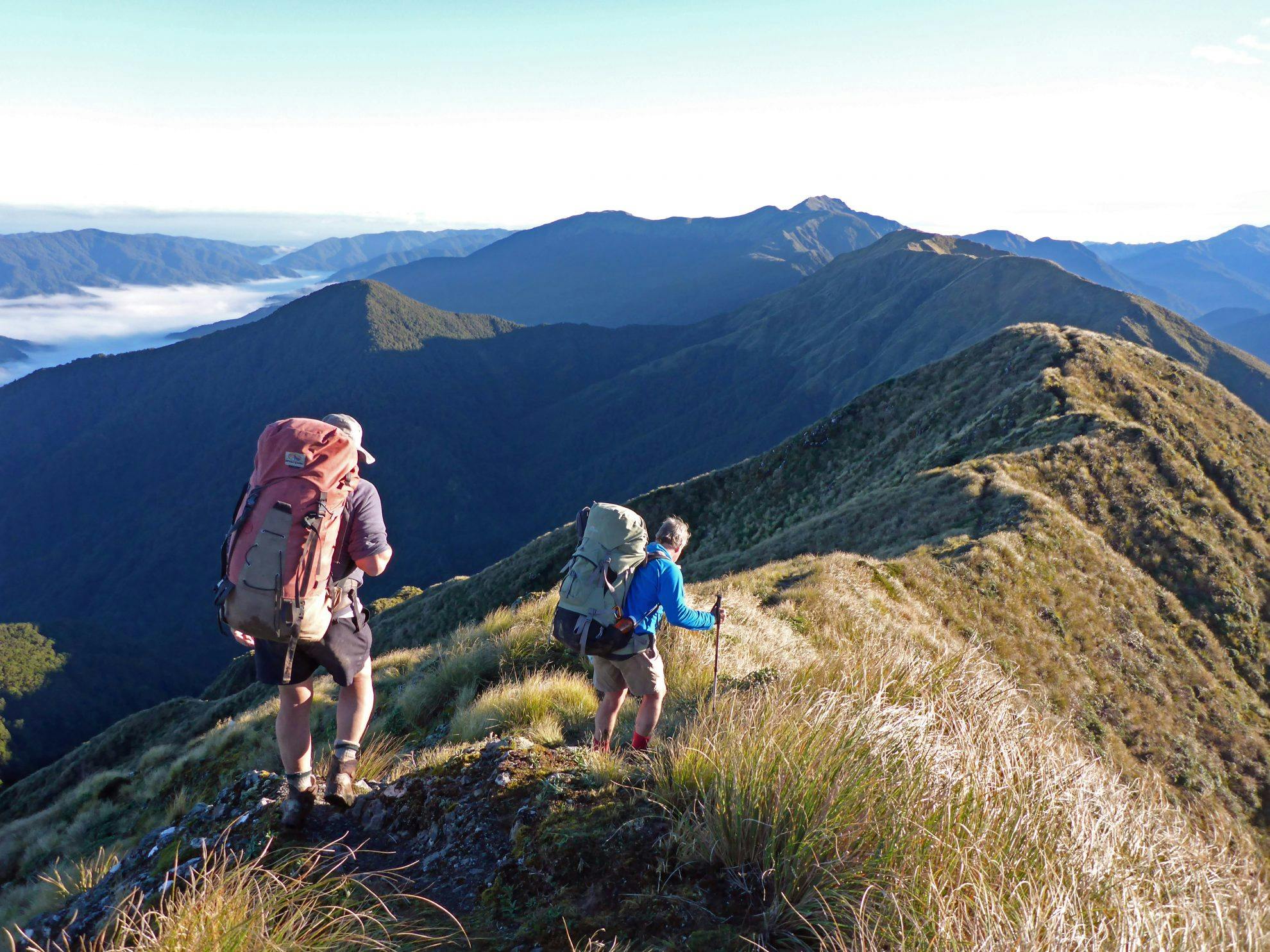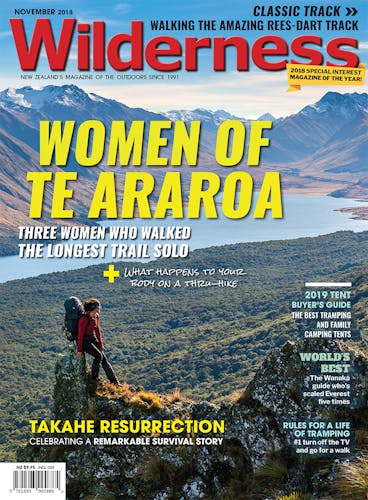Want to be still tramping in your 80s? George Driver talks to the elders of the backcountry to discover the philosopher’s stone of tramping
Neill Simpson’s first tramp changed his life. Arriving at Tongariro National Park on a Friday evening, the frosted landscape sparkled under the moonlight; Mt Ngauruhoe grumbled, belching out red-hot rocks which rolled down its symmetrical flank. The year was 1954, he was 21, Ngauruhoe was erupting.
“It was such a memorable evening, I’ll never forget it,” Simpson says. “We stayed at Mangatepopo Hut and I remember waking up to the hut shaking as Ngauruhoe rumbled away.”
Sixty-four years later, he’s still going. His last multi-day tramp was in June when he walked the Rakiura Great Walk on Stewart Island at age 85.
“It was pretty good, but I’m a bit slow going up hill these days.”
He is one of hundreds of trampers who defy the ageing process and tramp into their 80s. So what is his secret?
Simpson’s life has been defined by the outdoors. He says keeping fit and heading into the outdoors is what has kept him going.
“I put it down to just being active, being fortunate and having good genes.”
It’s a trait which all of the tramping elders Wilderness spoke to share – a long history of heading into the hills and staying active, day after day, year after year.
They have also come from a generation where cutting your teeth in the backcountry was no walk in the park. Tramping in the 1950s, Simpson began exploring in the era of the steel-framed Bergen pack, wearing bush singlets, oilskins and nail-soled boots waterproofed with mutton oil.
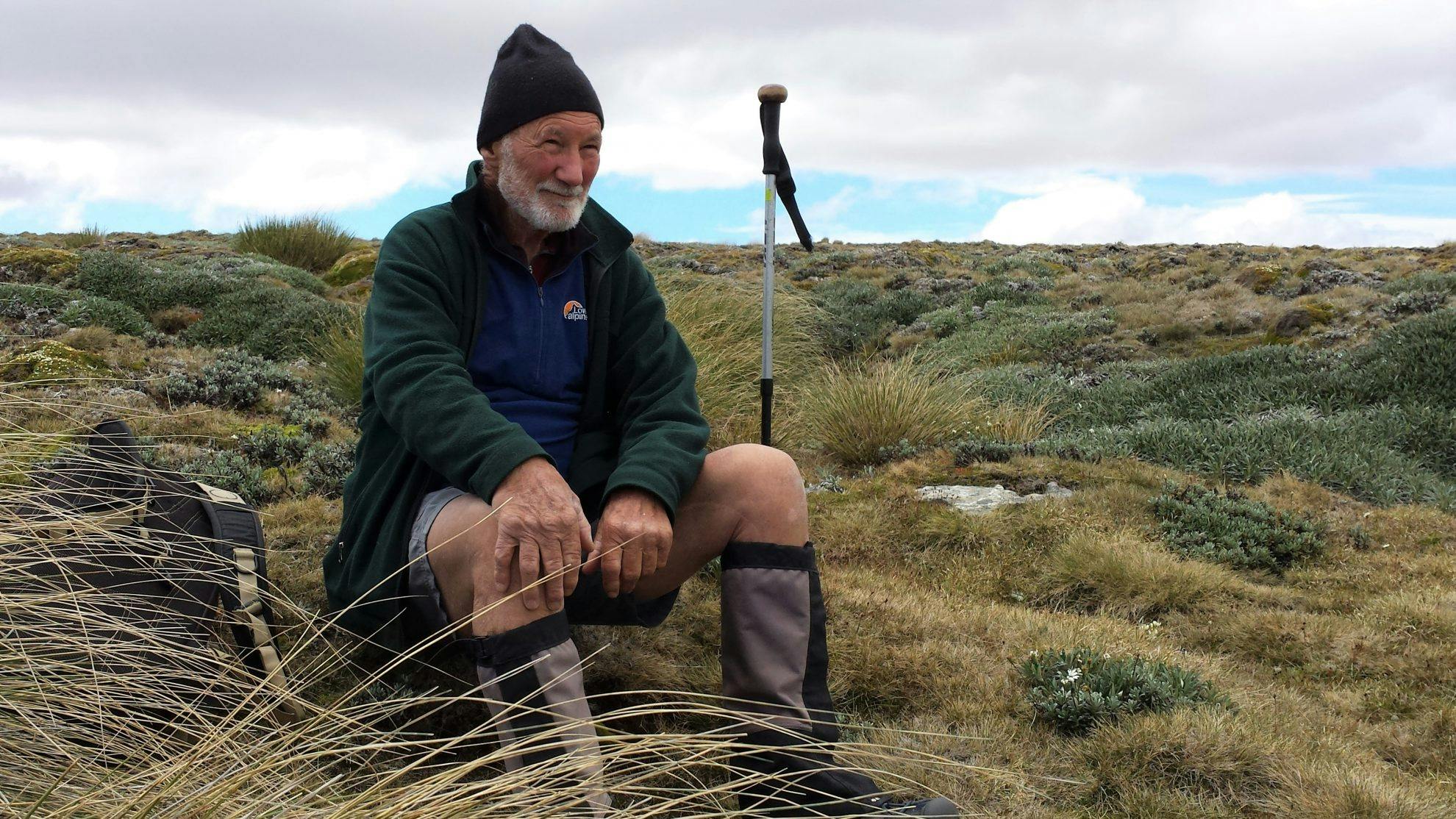
It was the pinnacle of a long life in the hills. Growing up in Auckland, Dumble first broke in his tramping boots in the Waitakere Ranges before embarking on a career in outdoor tourism that would help shape the future of the industry, now the country’s biggest export earner.
He started working for the Tourist Hotel Corporation at the Chateau Tongariro in 1961, where he scaled Mt Ngauruhoe and spent the night on its summit and swam in Crater Lake atop Mt Ruapehu. He later transferred to the THC’s Milford Sound hotel and then the Hermitage at Mt Cook, before getting a job as a tourist bus driver in Queenstown in 1961. Dumble would drive Volkswagen Kombi vans to a chalet located where the gondola now terminates – a route he reckons he drove more than 7000 times. He later started managing the chalet at the road-end before becoming a co-founder of the Skyline Gondola in 1967.
“I’ve done everything in the tourism industry, from washing dishes, to guiding, to managing hotels and running companies.”
Now living on a 4ha lifestyle block near Queenstown, he is critical of the tourism boom which has transformed the region.
“This place has really lost its individuality, its character and sense of community. Some people blame me for what’s happening now,” he says.
But the backcountry has always been his favourite escape from the crowds and Dumble says, until recently, his tramping was little-affected by his ageing body. “I just don’t attempt to keep up with the youngsters.”
But his tramping has recently been curtailed after he had a hip replacement after “wrestling a sheep” on his farm and developed a blocked artery in his leg. But he is determined to get back on the trail and has already been skiing again.
He says simply staying active and tramping has been the main contributor to his longevity.
“It’s definitely kept me healthy. It’s the open air, the scenery, the vegetation and the companionship with a group that keeps me going.”
His tip?
“Keep fit, and don’t sit down and watch TV. I haven’t turned mine on for four months.”
– Jon Dumble
Growing up in South Africa in the 1930s, Don Morrison walked everywhere – a habit he has never stopped.
“I grew up in the Great Depression and my parents could never afford a car, so we had to walk,” he says.
As he got older, Morrison began to explore the African backcountry, and a love of nature took root.
“Tramping there was a lot wilder than New Zealand,” he says. “You knew that nature was in charge and there were a lot wild animals and snakes. You always had to be aware of things that could harm you – you became like a wild animal as well.”
A critic of apartheid, Morrison moved to New Zealand in the 1960s and soon discovered the wildest part of the country – Fiordland and the Darran Mountains – where he would often go climbing.
“I like to get off track and when I saw Fiordland and looked on the map, there were still parts labeled ‘unexplored’. It was exciting.”
He has regularly explored Fiordland and Mt Aspiring national parks ever since, albeit at a slower pace now. When Wilderness spoke to him he had just returned from doing maintenance to a high school lodge in the East Matukituki Valley.
So what keeps drawing him back to the mountains?
“There’s something about knowing it’s just you and nature,” he says. “You have to look after yourself, nature is in charge. Now you’re supposed to have cell phones and PLBs, but I don’t like them. I think the idea that ‘if I get into trouble, a helicopter will come’ is the wrong attitude. It changes the experience.”
Nearing 90, Morrison says he is becoming a bit slower and has recently had to give up rock climbing, but he still walks in the Central Otago hills at least twice a week and goes on a multi-day trip once or twice a year.
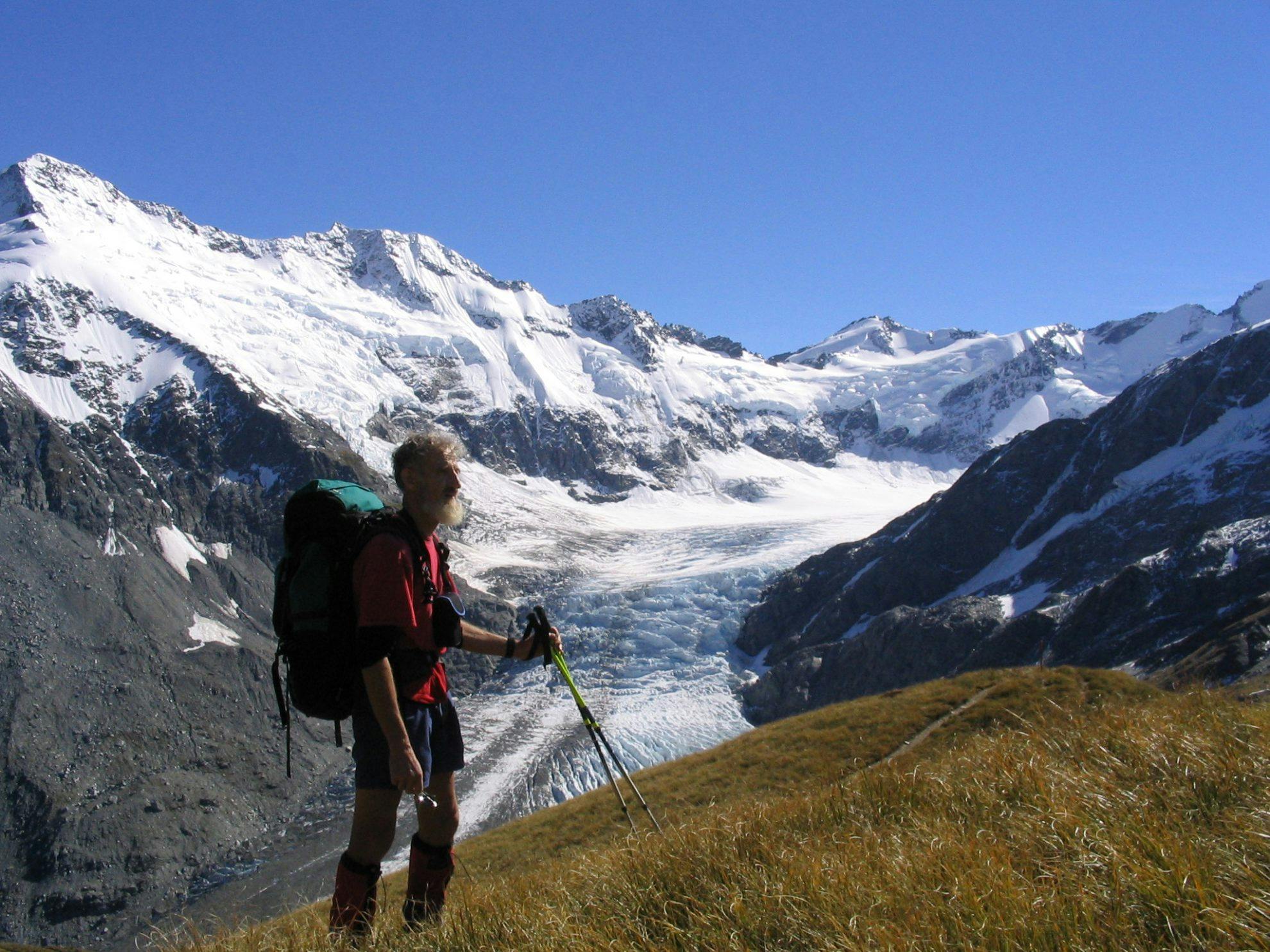
Associate professor Debra Waters says there is wisdom in the words of these senior trampers. An exercise physiologist and director of gerontology research at the University of Otago, Waters says tramping regularly is the best way to ensure you’re still tramping into your twilight years.
“Regular exercise, especially in the outdoors, is really important,” she says.
But when you age, a number of factors begin to hamper your ability to stay active. Muscles reduce in size so exertion becomes harder and you are more prone to injury. But Waters says the best thing for slowing that decline is regular exercise.
“As people age, you lose the muscle fibres that you use to exert power. But if you continue to do a high level of exertion, like tramping, you retain more of those muscle fibres.”
“I never smoked, I don’t drink and I’ve just kept walking. I hardly ever drive – I put petrol in my car just twice last year.”
– Don Morrison
Another way to slow muscle loss is to eat more low-fat, high-quality protein like chicken, fish, or nuts and legumes, which promote muscle growth.
She says addressing any niggles at an early stage is crucial to alleviating any pain you experience while tramping.
“You’ve got to get on top of pain,” Waters says. “Keep an eye on pain when you tramp, and get it addressed early. If you get a hip replacement in your 70s, then you can still be tramping a decade later. But the longer you leave it, the harder it will become to recover.”

Your sense of balance also declines with age, but like other factors, tramping is also an excellent training ground. But older trampers are also at a higher risk of injury, so Waters says it’s important to be aware of your limits and don’t push too hard.
“Often there can be a mismatch between what your brain thinks you can do and what your body is actually capable of, so sometimes people overestimate their capabilities. You can’t expect to do the same trip in your 80s that you did in your 70s. That’s when you can get an injury.”
This may help explain why people who are over 65 are over-represented in search and rescue statistics. Seniors make up just seven per cent of trampers, but account for 12.5 per cent of search and rescue operations.
But ageing isn’t all about what you lose. Waters says older people tend to accept that their abilities have changed and still enjoy being in nature and being active.
“People tend to find ways to maintain their connection to the outdoors and modify how they do it to make it achievable,” she says.
Beyond the physical benefits, new research with her colleagues at Otago university has found just being in natural environments is important for the overall wellbeing of older people. The social aspect of tramping is also good for mental health, and being part of a tramping club means you are more likely to keep heading back to the track.
A number of tramping clubs around the country focus on encouraging older members and can be a good motivation to keep on the trail.
Valda Hodges, 84, formed the Over 40s Tramping Club in Christchurch 41 years ago after starting tramping in ‘later’ life.
Looking to get a group of like-minded trampers together, she formed the group for ‘older’ trampers.
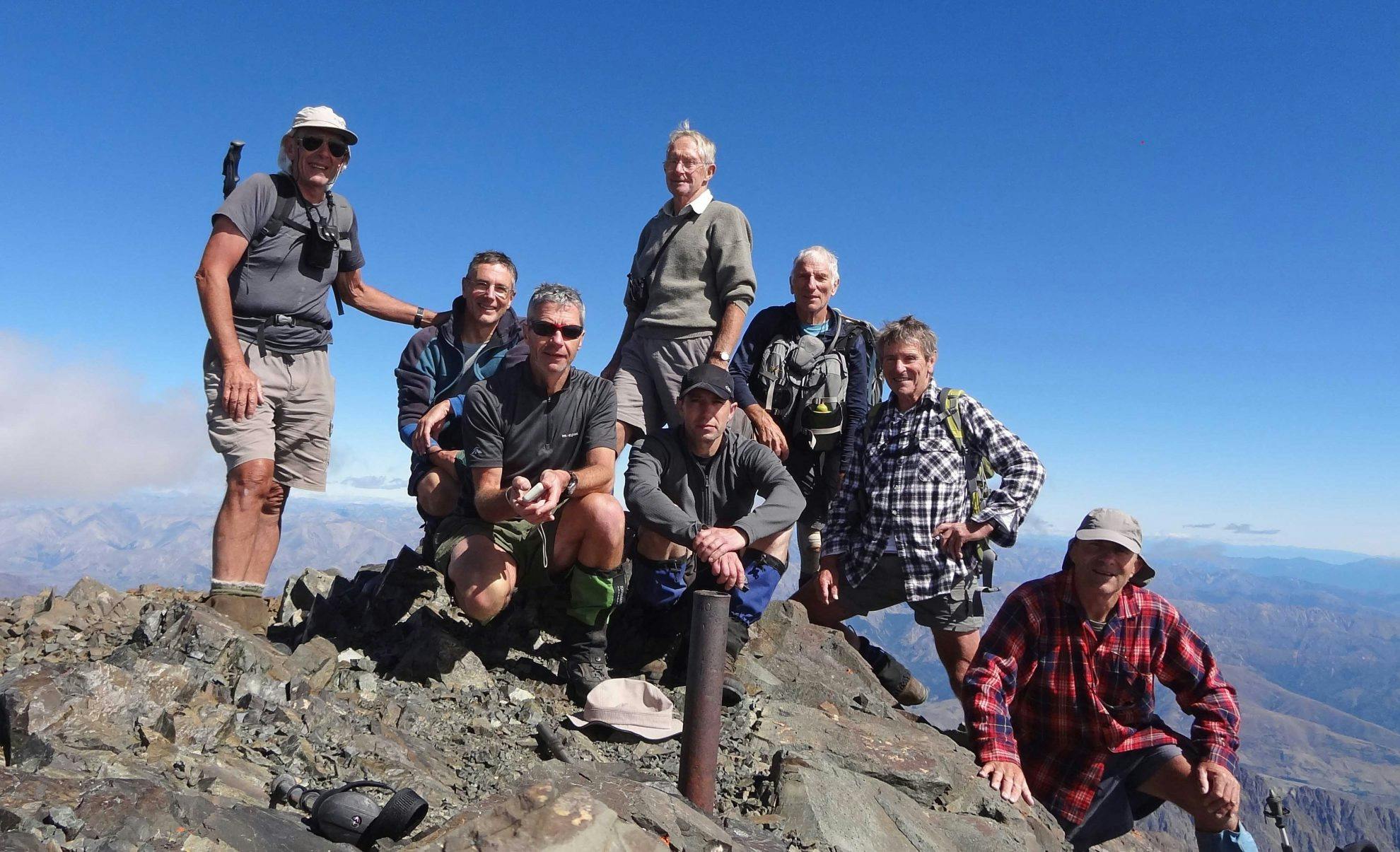
“It was formed for people who are still out tramping in the mountains, but at a slower pace,” Hodges says.
Little did she know the club would grow to include a number of octogenarian trampers, including herself.
“I never thought I’d still be tramping 40 years on.”
Hodges, now a life member of the club, is part of its ‘veterans’ group – about 20 people over 80 who head on a three or four hour walk once a week.
Her tip for tramping longevity?
“Eat well, exercise and just make sure you keep doing it. I walk an hour every day, and always head out with the veterans every Wednesday.
But a lot of it is luck. It’s your genes – some people get arthritis or have problems, but I’ve been lucky.”
Club chair Alistair McKerchar says the club has about 400 members, about half of whom are over 70. As the club’s members have aged, they’ve loosened their membership criteria, which used to require all members go on an overnight tramp. It now has four tiers of difficulty, ranging from mountaineering trips in Arthur’s Pass, through to flatter, shorter trips closer to Christchurch for the veterans.
His advice: “Don’t become a blob.”
The Kaumatua Tramping Club in Wellington also caters for an older membership. Club president David Weston, 74, says the club was formed in 1960 at a time when most tramping clubs catered for people in their late teens and early 20s. Fifty-eight years on, Weston says almost all of the club’s 140 members are retirees, including a handful of members in their 90s.
“It’s your genes – some people get arthritis or have problems, but I’ve been lucky.”
– Valda Hodges
“Tramping is good exercise without putting too much stress on your heart and other parts of the body,” Weston says. “A lot of us find it very relaxing to be in the bush, away from the hustle and bustle of daily life.”
So, the secret to a life of tramping seems obvious: just keep doing it.





